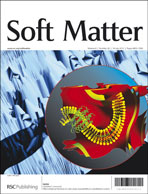Formation of nanophases in epoxy thermosets containing an organic–inorganic macrocyclic molecular brush with poly(ε-caprolactone)-block-polystyrene side chains
Abstract
In this contribution, we report the synthesis of organic–inorganic macrocyclic molecular brushes with a 24-membered macrocyclic oligomeric


 Please wait while we load your content...
Please wait while we load your content...